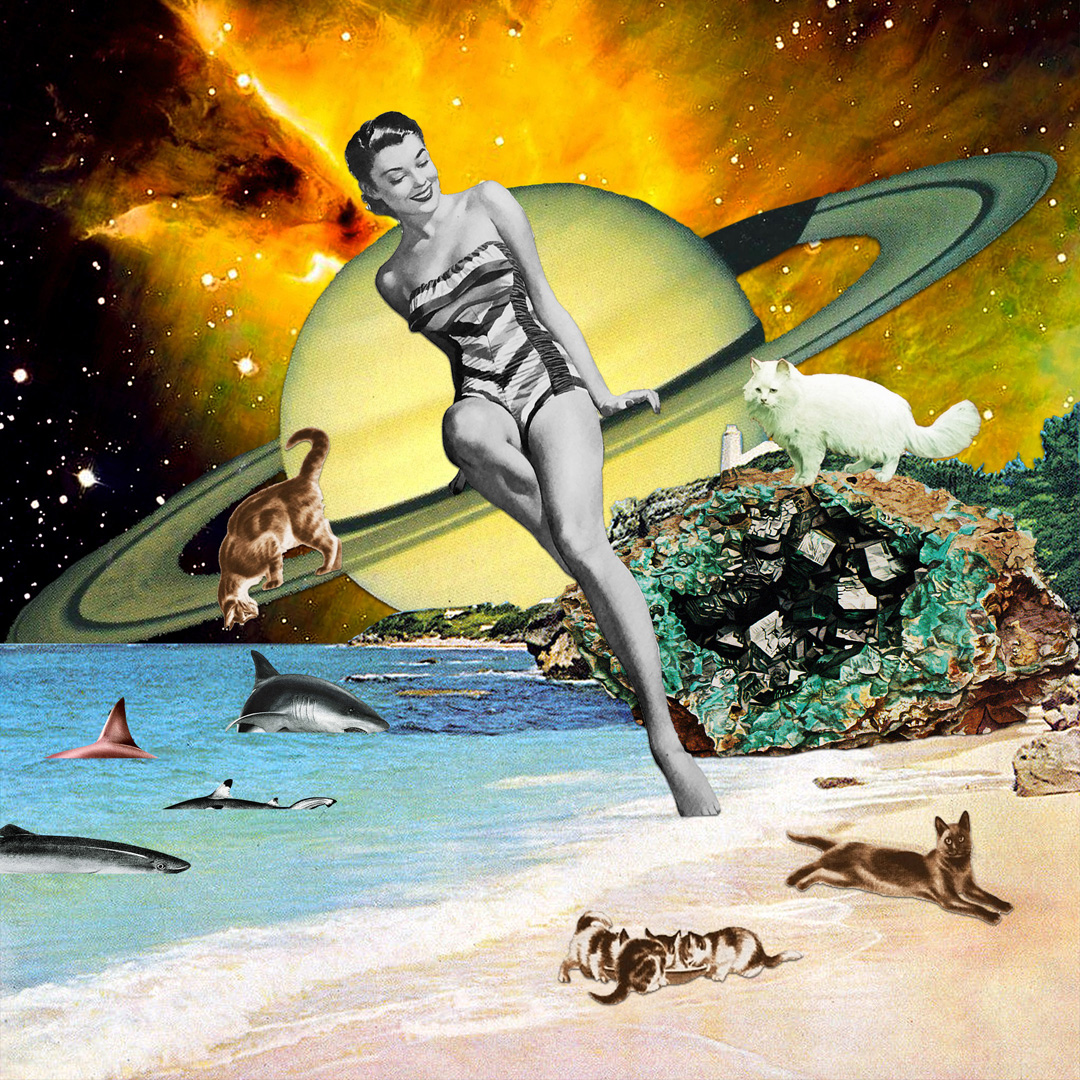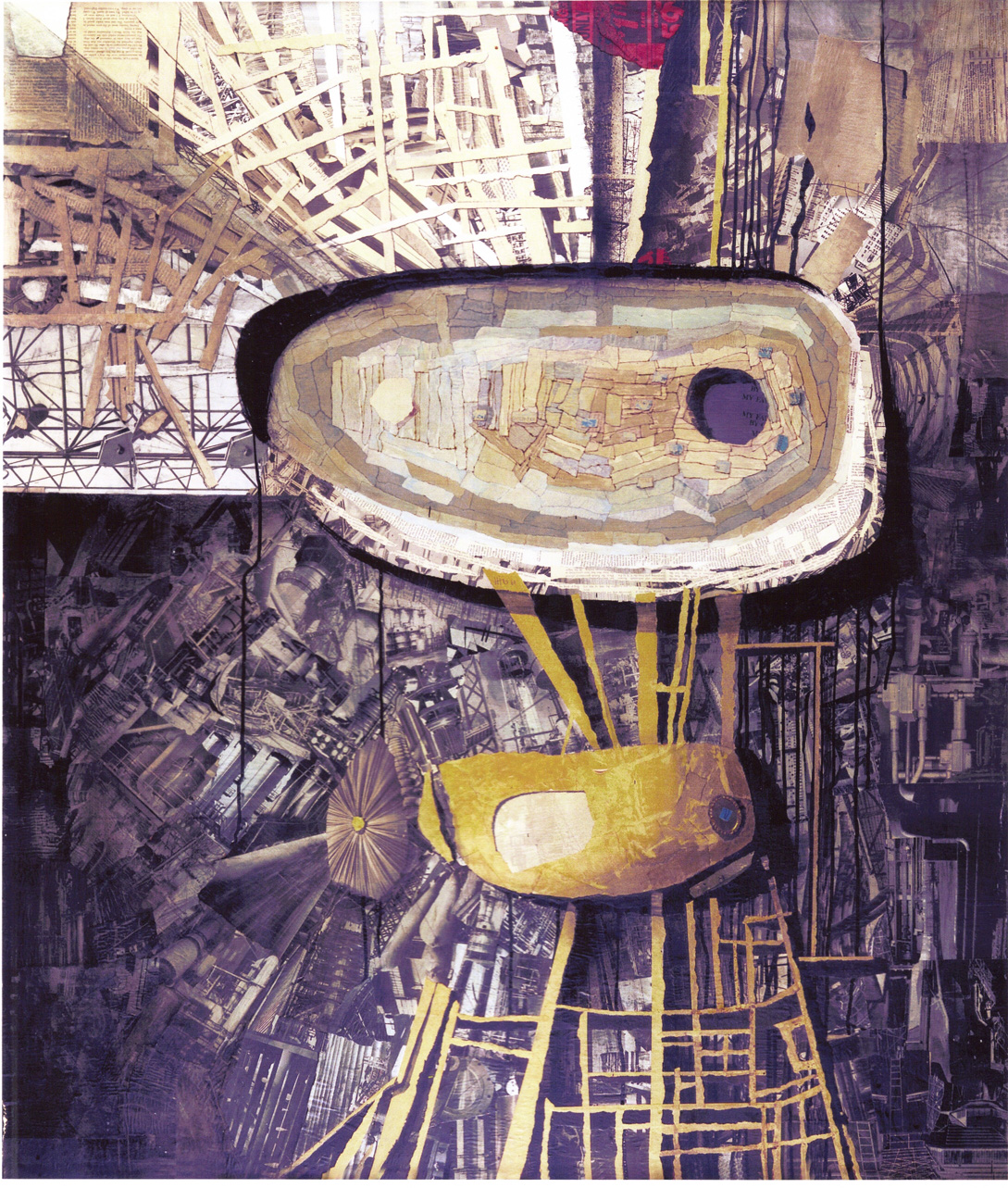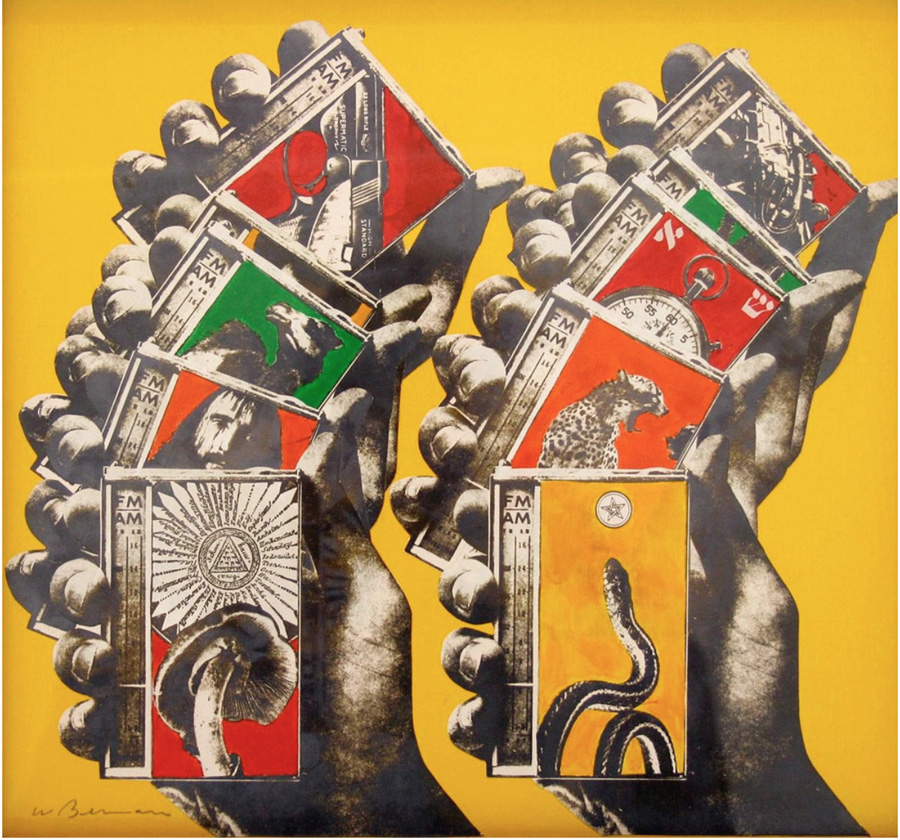Collage: the Ultimate Remix - Page 5
 |
|
|
 |
|
|
 |
|
|
|
|
|
|
The collage or assemblage as psychosocial criticism was big in California during the mid-century years. Working in the Bay Area were many artists who included collage and assemblage in their repertoire, including Jay De Feo, Bruce Conner, George Herms, and Wally Hedrick.
"The darker side of sex and romance animates Conner's assemblages of the early 1960s, which are among the most intense, haunted artworks of the past century," Michael Duncan wrote. "These fetishistic conglomerations of feathers, fabric, jewelry, wallpaper, and fur, usually encased in skeins of nylon stocking, suggest loose narratives of violence and unrequited desire."
Even some California collage artists whose art was more abstract, such as Horst Gottschalk, produced work with an ominous edge. Gottschalk, who grew up in Nazi Germany and arrived in California in 1959, used paper, dripping paint, bits of newspaper and wood, among other materials, to create work that could be jagged and tough, fusing collage with abstract expressionism.
Brion Nuda Rosch, a contemporary San Francisco artist whose work includes collage, installation, performance, and sculpture, mentions another appeal of collage. The recognizable elements that collage can bring to an otherwise abstract work of art—a photo of a snake, say, or the head of an ape—can pull in viewers right away.
"The collage might be found photography," he says. "It's something that the audience can identify with," providing "a visual cue that at first look is recognizable. That collage can present the tone for the show." Audiences, it seems, like collage.
"There was a moment when the majority of my exhibits had a focus on collage," Rosch says. "That had something to do with my showing in commercial galleries, because it was accessible to the clients. With my institutional work, I do more sculpture and installations, or even the use of ephemeral materials."
His collages tend to be simpler in imagery than the busy, almost novelistic art of Max Ernst or Jess.
"In my own work, it was a direct process of just putting one thing on top of another. It's like with my sculpture. I place one form upon another form. I discovered I could be comfortable with something that simple."
"There were times," Rosch says, "when I struggled because I thought, there was an ease to completion. The process was rather swift, placing one thing upon another."




